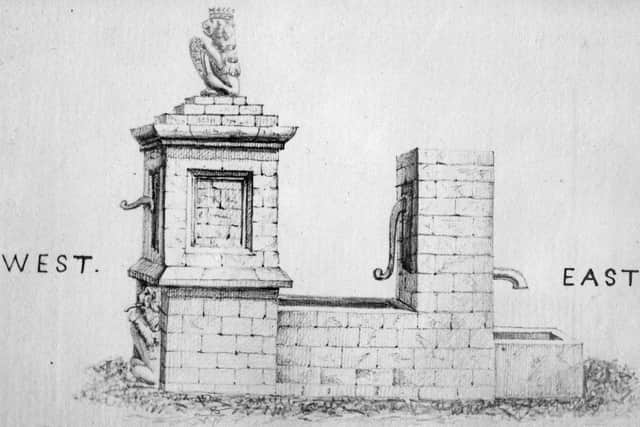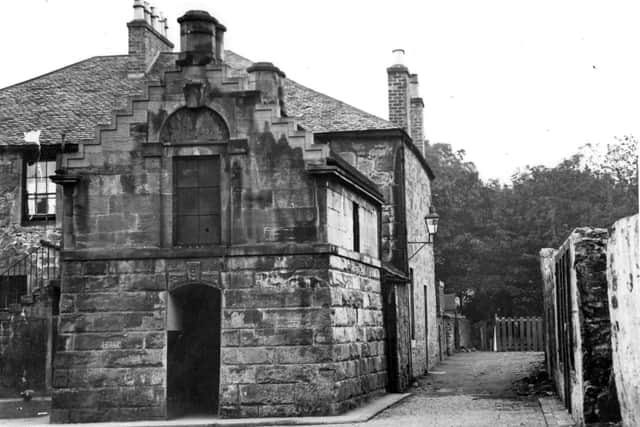Looking Back with Ian Scott: Water supply was Falkirk's biggest political hot potato of Victorian age
and live on Freeview channel 276
They arranged for wooden pipes to be laid from their land to the town to help free the townsfolk from their dependence on the East and West Burns which often dried up in the summer months.
However as the population multiplied in the 18th and 19th centuries it was not nearly enough to satisfy demand.
Advertisement
Hide AdAdvertisement
Hide AdEnter the famous Stentmasters, representatives of the various trades of the town, who acted like an early burgh council.


Maintaining the wells and pipes, and ensuring a steady supply during times of drought, was one of their main tasks and in 1805 they decided to build a big wooden storage cistern behind the High Street near Baxters Wynd in a short street called, not surprisingly, Cistern Lane.
The entrance to the lane stood opposite the Wheatsheaf with the ‘cistern house’ itself standing at the far end at the junction with Young’s Row, now buried beneath the Howgate centre.
The lead-lined container was 18ft long, 11ft wide and 9ft deep and contained 13,000 gallons.
Advertisement
Hide AdAdvertisement
Hide AdThe cost was £560 which included lead pipes to take the water to the well.


Twenty years later with several new wells erected in the town, the Stentmasters turned their attention to the cistern which was in a poor state.
They decided to build a substantial stone building as a replacement which was completed in 1826 by local builder James Wyse.
This time the cost was much cheaper at £270 presumably because it required no lead lining or additional piping.
Advertisement
Hide AdAdvertisement
Hide AdIt is the building shown in the picture and served the town throughout the Victorian era, though it has to be said the folk were never happy with the service.
This was partly because private individuals could pay a fee and attach their own pipes and draw off water to their houses and this meant that from time to time the cistern could not meet the demand.
Quality was also a problem with one commentator claiming that “sometimes the water comes to the town the colour of porter . . . and it takes several hours for the mud to subside”.
A glance through the Herald from the 1840s on confirms that water or the lack of it was the biggest political hot potato of the age.
Advertisement
Hide AdAdvertisement
Hide AdMore than one council was kicked out because they failed to solve the problem but towards the end of the century a new supply from the Denny Hills reached the town and amid scenes of jubilation the old cistern was abandoned.
In 1895 it was converted into a public convenience, probably Falkirk’s first, and was demolished around 1830.
Cistern Lane followed it into the dustbin of history along with Young’s Row, Rankine’s Lane, Silver Row and many others but at least I have a souvenir to remind me of this bit of Falkirk’s social history.
When the last remnants of the lane were demolished decades ago the iron street name plate was ‘rescued’ from the rubble and eventually found its way to me!
I still have it on the wall of my house much to the confusion of the postie!